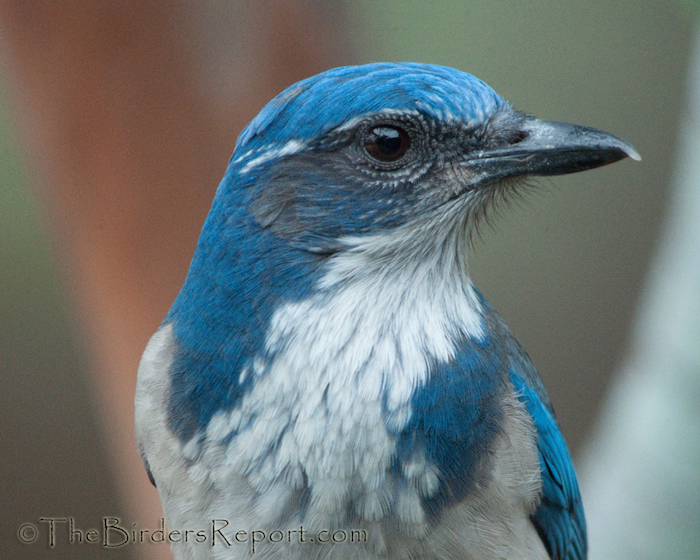
Common as dirt and all around us, anyone who sets foot outdoors must have seen the Western Scrub Jay, boldly sitting atop the highest tree, scolding raucously, or flying with an acorn in its beak. Sometimes mistakenly called “Blue Jay”—that’s its cousin east of the Rocky Mountains who sports a perky blue crest—the Western Scrub Jay is a foot-long crestless jay with blue on head, wings and tail, a pale brownish-gray back, and a gray-white throat.
The male and female form a long-term pair bond and raise 3 to 6 young per year in a nest built of sticks. Rather than picking sticks up off the ground, I have seen them break sticks off a tree, often discarding any that don’t meet their standards.
Although the diet of the Western Scrub Jay includes fruit, seeds, insects, small animals (and it does rob nests), its mainstay is acorns which it often buries in the ground for consumption later, a practice called caching.
I watched a jay stick an acorn into the soft soil of the front of my vegetable garden. Immediately, another jay showed up and swiped the acorn and buried it in back in a tomato cage. Then jay number 3 flew in after the same acorn, but was chased off by the second jay.
Similar lunchtime observations of jays’ thieving by a research scientist at UC Davis led her to an investigation in the lab. She found that individuals that stole food from other jays’ caches spent much more time moving and reburying the same piece of food than non-thieves did. So, thieves suspect that everybody else is a thief, too.
Acorn Woodpeckers, who cooperatively make their own caches, or “granaries,” of acorns in holes in trees, are also on to the tendency of Western Scrub Jays to steal nuts. The woodpeckers always have a member of their group on guard and if a jay comes near, the woodpeckers go into noisy “red alert,” and several fly in to chase the potential raider away.
Another ramification of Western Scrub Jays’ and related species’ habit of caching acorns relates to their importance in the scrub oak woodlands. Of course, the birds never find all the acorns that they’ve buried and many remain to sprout into oak seedlings.
Researchers recorded that the related Blue Jay cached significant numbers of acorns – 50 jays cached 150,000 acorns in 4 weeks, leading to speculations that the swift extension of oak forests as the ice retreated at the end of the last ice age was due to the activity of the jays.
A botanist looked at this more closely. He superimposed a map of the world-wide distribution of oaks upon a map of the occurrence of acorn-caching jays of various species and found that no oaks were found where there were no jays, although the jays survived in areas without oaks. His conclusion was that oak forests are entirely dependent upon jays for their reproductive survival. So, our local feathered rascal has an important job to do for our oak forests!
Western Scrub Jays are common in our neighborhoods and woodlands, so watching them in action takes little more than patience and curiosity.
